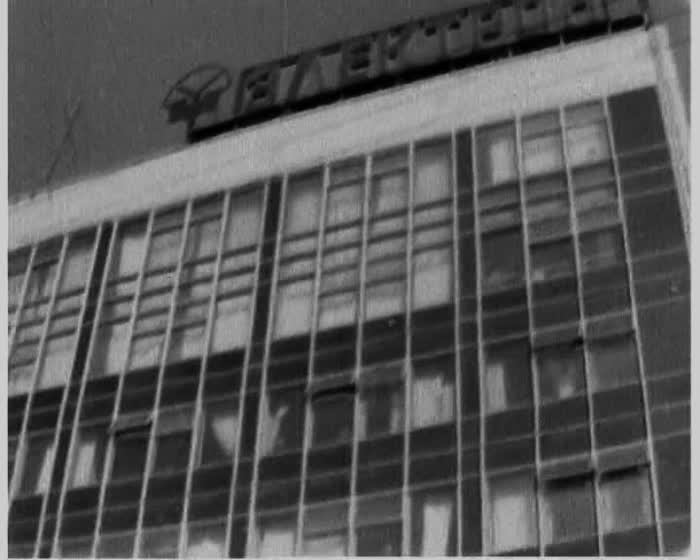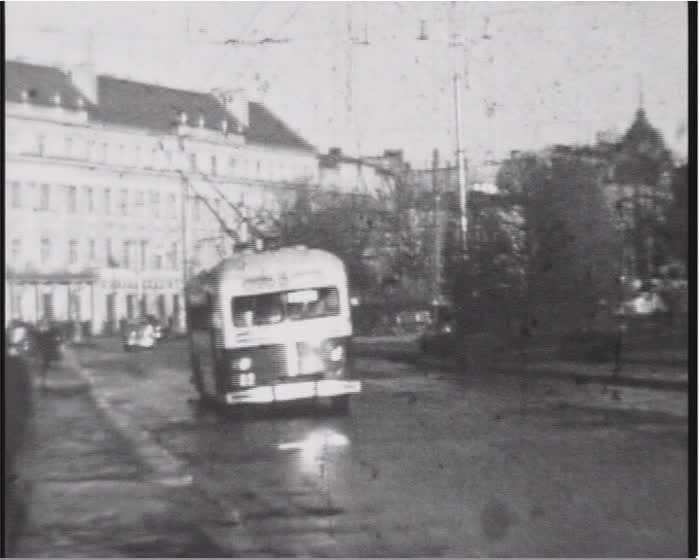Further readings:
- Rudnytskyi Andrii. Upravlenye horodskoi sredoi. Lviv: Vyshcha shkola, 1985.
- Nataliia Otrishchenko. “Maibutnie, yake ne nastalo: ekspertyza, planuvannia ta piznoradianske misto”, lecture within the series “Let’s Have a City”, Center for Urban History, 7.12.2023.
- Bohdan Shumylovych. “Telehraf, telepatiia, telebachennia: v poshukakh nevydymoho”, lecture within the series “Let’s Have a City”, Center for Urban History, 18.04.2024.
- Foucault Michel. Discipline and Punish: The Birth of the Prison. New York: Vintage Books, 1977.
- McQuire Scott. The Media City: Media, Architecture and Urban Space. SAGE Publications Ltd, 2008.



A 1971 television story produced for Lviv Television news describes an experiment using television cameras to regulate traffic at one of the busiest intersections in the center of Lviv. The source does not provide information about the authors or the context of the device’s development. However, it is known that the Electron plant, one of the largest TV manufacturers in the city at the time, operated a special design bureau for television equipment. This suggests the presence of technological expertise and infrastructure capable of developing such devices using the relatively new technology of transmitting images via television signals. This technology was becoming increasingly popular in various fields, including traffic control. The story demonstrates how mobile television cameras allowed a traffic inspector to monitor a pedestrian crossing at the intersection of Lenin Avenue and Gorkyi Street (today: Svobody Avenue and Hnatiuk Street) using buttons and a screen. The footage suggests that the inspector could address pedestrians using a microphone and loudspeakers placed near the crossing. Thus, the communication infrastructure facilitated not only remote surveillance but also remote control. The title of the TV story employs the metaphor of “electronic eyes.” In the late Soviet context, a similar metaphor of an “electronic brain” was commonly used to describe computers. These metaphors were characteristic of cybernetic discourse on the management of complex systems and human-machine interaction and were actively used to shape perceptions of the development of computers and remote communication infrastructure during the 1960s and 1970s. The system of surveillance and control through television cameras exemplifies this discourse. According to Michel Foucault, such a system can be interpreted as a kind of panopticon, a mechanism of power and control that establishes authority not only through surveillance but also by communicating this surveillance to society. No documentary evidence has been found to suggest the mass production and use of such cameras on the streets of Soviet Lviv.